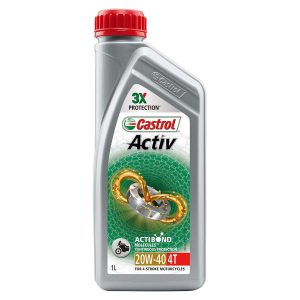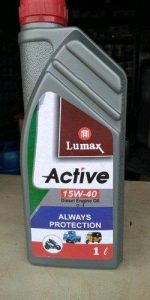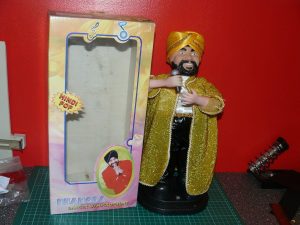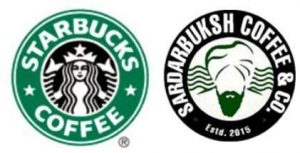This article is written by Sukriti Tiwari, pursuing a Diploma in Intellectual Property, Media and Entertainment Laws from Lawsikho.com. Here she discusses “Landmark Infringement Cases for Infringement of Trademarks”.

Section 29 of the Trademarks Act, 1999 defines infringement of trademarks as use of a mark which is ‘identical’ or ‘deceptively similar’ to a registered trademark by an unauthorized person. The Trademarks Act, 1999 allows both civil and criminal action to be taken against trademark infringement. As more and more cases of infringement come up before the courts in India, it is important to have a look at some landmark judgements related to the same.
To know more about Trademark infringement please visit
1. The Maaza Fiasco – Whether one can register TM elsewhere post-sale
The Coca Cola Co. v. Bisleri International Pvt. Ltd. (Manu/DE/2698/2009)
Bisleri, which originally owned the trademark of mango drink MAAZA, sold it to Coca Cola in India. Bisleri later applied for registration of MAAZA trademark in Turkey and started to export the mango drink with the trademark of MAAZA. Coca Cola approached the Indian courts asking for an injunction along with damages against Bisleri for infringement of its trademark MAAZA as well as to restrain Bisleri from divulging the formulation of the drink. Coca Cola succeeded in obtaining a temporary injunction against Bisleri for infringement of the trademark.
2. Yahoo! – The case of identical names
Yahoo!, Inc. v. Akash Arora & Anr [78 (1999) DLT 285]
The domain names owned by the Plaintiff and the Defendant, ‘Yahoo!’ and ‘Yahoo India!’ respectively, were almost identical and similar phonetically too. It was felt by the plaintiff that this similarity would confuse and deceive users and lead them to believe that the two domain names were connected. It was held by the Delhi High Court that the name ‘Yahoo!’ has become distinct and unique and is associated with the plaintiff by public at large. It further held that even a domain name served a similar purpose as that of a trademark and must be granted similar protection.
3. Red Soled Shoes – whether louboutin’s prerogative
Christian Louboutin v. Pawan Kumar [CS (COMM) 714/2016]
The plaintiff found out the defendant had been selling women’s footwear with plaintiff’s ‘RED SOLE’ trademark. The ‘RED SOLE’ trademark has been registered in various countries by the plaintiff and it is a distinguishing characteristic of their products. The Delhi High Court held that the plaintiff is recognized by customers worldwide and the same is true for India. The ‘RED SOLE’ was held by the court to be a trademark that was well-known and people generally associated the ‘RED SOLE’ with Christian Louboutin. Damages by the defendant were also ordered to be paid.
4. Activ or Active – Identical Sub-brands & Trade-dresses
M/S Castrol Limited & Anr. v. Iqbal Singh Chawla & Anr. [CS (OS) 4/2011]


The Plaintiff is the owner of the trademark ‘CASTROL’ and ‘ACTIV’. The Plaintiff found out in 2010 that the Defendant had been selling 4T oil under the ‘LUMAX ACTIVE’ trademark. The Plaintiff also alleged that the trade dress of its products, including the layout and the font, was being imitated by the Defendant. The Delhi High Court granted a permanent injunction against the Defendant for preventing the use of trademark ‘ACTIVE’ in a manner that resembled the packaging and font of the Plaintiff’s products. However, the Court clarified that the injunction would not restrain the Defendant from using their mark ‘ACTIVE’ in different packaging, font, and trade dress than that of the Plaintiff.
5. Fate of the first to enter market worldwide without domestic registration
Milmet Oftho Industries & Ors. v. Allergan Inc. [2004 (28) PTC 585 (SC)]
In this case, the Appellant, an Indian pharmaceutical company, was restrained by the Apex Court from adopting the trademark ‘OCUFLOX’. The Court held that even though the mark had neither been registered by the Respondent in India nor had it been used by the Respondent in the Indian market, it was to be protected because the Respondent was the first to enter the world market and to register the mark. This decision upheld the doctrine of trans-border reputation. The Court also emphasized that in the field of medicine, any and all probability of confusion and deception ought to be prevented in the interest of the public.
6. Gems or James – The Notorious Case of Phonetic Similarity
Cadbury India Limited and Ors. v. Neeraj Food Products [142 (2007) DLT 724]
The Plaintiff is a well-known producer and manufacturer of chocolates and confections and has a trademark ‘GEMS’ registered in its name. The Plaintiff approached the court for an injunction against the Defendant who was allegedly selling a product under the mark ‘JAMES BOND’ which resembled the ‘GEMS’ product of the Plaintiff in packaging and size. The Plaintiff claimed that the product sold with mark of ‘JAMES BOND’ was deceptively similar to ‘GEMS’. The court held that the products of the Defendant were indeed deceptively similar to that of the Plaintiff and granted an injunction restraining the Defendant from selling the said product.
7. KWIK Question – Whether Parts of Trademark Subject to Protection
Pidilite Industries Limited v. Poma-Ex Products & Ors. [2017 (72) PTC 1]

In this case, the Defendant was alleged to have dishonestly used mark ‘KWIK’, a part of Plaintiff’s trademark. The Defendant was using the trademark ‘KWIKHEAL’ and the packaging of the product was similar to Plaintiff’s ‘FEVIKWIK’ product. The High Court of Bombay held that the mark ‘KWIK’, being a dominant part of the trademark of the Plaintiff, cannot be adopted by the Defendant. The court further held that the phonetic similarity between the marks would easily mislead and deceive the consumers. ‘KWIK’ was held to be a dominant part of the Plaintiff’s trademark and an injunction was granted restricting the Defendant from using the same.
8. TOY-ing with Personality Rights & TMs – The Case of Daler Mehndi Dolls
DM Entertainment v. Baby Gift House and Ors. (MANU/DE/2043/2010)

Pop-star Daler Mehndi had assigned the trademark ‘DALER MEHNDI’ along with personality rights to the Plaintiff company. The Defendant started to Daler Mehndi dolls and cashed in on the artist’s popularity. The Plaintiff approached the court for grant of permanent injunction against the Defendant. The court duly recognized the artist’s publicity rights as well as the celebrity merchandising rights that belonged to the Plaintiff and issued an injunction against the Defendant.
9. H&M – Honest Mistake or Not; Almost Identical Marks
H&M Hennes & Mauritz AB Anr. v. HM Megabrands Pvt. Ltd. & Ors. (IA-7259/2016)

The Plaintiff, a well-known fashion brand with thousands of outlets worldwide, had adopted the ‘H&M’ trademark in 1970 and it was registered in India in 2005. The Plaintiff alleged the Defendant had infringed their trademark by representing their ‘HM’ mark using the same colour combination of red and white as used by the Plaintiff. The Defendant contended that their usage and adoption of the mark was innocent and that the mark stood for the names of their directors. The Defendant further argued that since the Plaintiff entered the Indian market much later, their mark had not acquired any reputation in India when the Defendant adopted their ‘HM’ mark in 2011. The Court ruled in favour of the Plaintiff and held that in case of a brand having trans-border reputation it is not necessary for it to set up shop in India for its trademark to be protected in India. Hence, the Defendant was restrained from using the ‘HM’ mark or any other deceptive variations of the same.
10. What’s in a Cuppa? – Clever Emulation Yet Deceptively Similar Logo
Starbucks Corporation v. Sardarbuksh Coffee & Co. & Ors. [CS (COMM) 1007/2018]

The Plaintiff is a well-known chain of coffee outlets spread over the world including India. The Plaintiff registered its trademark ‘STARBUCKS’ and logo representing a “long-haired crowned maiden” in India in 2011. The Defendants started their venture in 2015 using a logo with a black circular band saying ‘SARDARBUKSH COFFEE & CO.’ and the image of a turbaned man and wavy lines behind him. This logo used the colour scheme of the logo of the Plaintiff. The Delhi High Court held that the trade-name as well as the logo of the Defendants was deceptively similar to that of the Plaintiff and granted relief to the Plaintiff and ordered the Defendants to adopt the name ‘SARDARJI-BAKHSH COFFEE & CO.’ for running their business.
11. The Three Stripe Struggle – Adidas Irked by Forever 21 Using Stripes Similar to its TM
Adidas America, Inc. v. Forever 21, Inc. [3:17-cv-00377]

Adidas is a well-known MNC involved in making shoes, apparel, and other fashion accessories. While, Forever 21 deals in fast-fashion. It was in 2015 that Adidas first claimed Forever 21 to be misusing Adidas’s trademark “Three Stripes Mark” design by offering for sale various products resembling Adidas’s products and even selling “repurposed Adidas” products that were actually counterfeits. Adidas contended that it does not merely use the triple stripes as a design element, rather it proves as a brand identifier for consumers to recognize the band. Adidas also pointed out the massive investments, which run into millions of dollars, it has made to cultivate the “Three Stripe Mark”. It further stated that it has been using the said mark since 1952. The parties, however, did opt for an out-of-court settlement in 2016. But it was in March 2017 that Adidas chose to sue Forever 21 again, along with its suppliers, for wrongfully using the “Three Stripe Mark” and infringing its long-standing trademark. Forever 21 has actively defended its stance and has adamantly chosen to defy Adidas’s claim. Forever 21 contends that Adidas does not have a right to allege that each and every item having stripes causes an infringement of its trademark. It further claims that at least some elbow room be given for the use of stripes on products for decorative and design purposes. The matter is sub judice, though Forever 21 filed for a stay as it was undergoing bankruptcy proceedings.
Conclusion
With each case, the scope of trademark infringement is being widened and further clarified by the Indian courts. As more and more businesses go global, it is imperative that trademark jurisprudence keeps evolving. The domestic scenario in India is also brimming with start-ups, leading numerous big businesses to exercise their trademark rights against deceptively similar products and brands. New issues involving international businesses are coming up every day and the need of the hour is an international legal framework that is capable of being enforced universally to prevent and cure trademark infringements world over.
Students of Lawsikho courses regularly produce writing assignments and work on practical exercises as a part of their coursework and develop themselves in real-life practical skill.
https://t.me/joinchat/J_0YrBa4IBSHdpuTfQO_sA
Follow us on Instagram and subscribe to our YouTube channel for more amazing legal content.
 Serato DJ Crack 2025Serato DJ PRO Crack
Serato DJ Crack 2025Serato DJ PRO Crack











 Allow notifications
Allow notifications




Such an amazing post very informative and I will definitely suggest other people about it for sure.